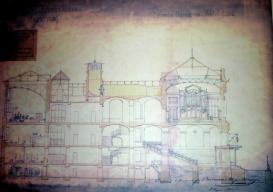This project, part of my book about the history of music experiments and musical action in nineteenth- and twentieth-century medical contexts, examines the relations between physiological experiments in Russian laboratories and musical practice and research in a St. Petersburg gynecological hospital. Walcker organ op. 1100 was intended to amuse the patients, improve the social climate, and serve as an “instrument” to investigate the influence of sound waves and music on patients during operations and convalescence. Supplemented by telephones (or theatrephones), the organ’s sound was to expand medical care through listening.
My investigation revolves around the question of what knowledge and interpretation of physical and psychological listening, and of its influence on healing with music, is represented in this instrument. Two figures and their research between 1876 and 1898 are my main focus: from early examples of audification (including telephones) in the writings of Ivan Romanovich Tarkhanov to first laboratory research in listening and emotional reactions through music by Johann Dogel. I ask how they searched for evidence of emotional reactions through physiological measures (galvanoscope, plethysmograph), graphical representations of music, and introspection. The ambivalence and ultimate failure of mixed-method research is reflected by the organ, resonating between laboratory and clinic but also an ambivalent materialization of psychophysiological research on emotions, medical needs, and artistic exposition.

